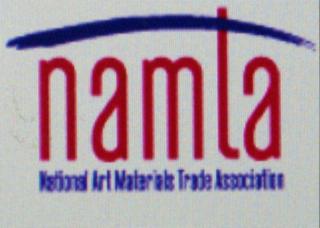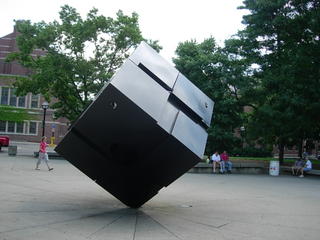When I write these things in the middle of the night, I tend to be much more philosophical than I do in the light of day.
This year has been a challenge for manufacturers around the country, and it's been a particular challenge for small manufacturers. This has never been more true than in the art materials business.
 I am very involved in the National Art Materials Trade Association (NAMTA), and have been for years. I currently chair the committee on Art Educators.
I am very involved in the National Art Materials Trade Association (NAMTA), and have been for years. I currently chair the committee on Art Educators. I believe that
Art Supply stores need to do a better job in educating their customers - particularly art educators - about what's available in the marketplace, and how it's used. Manufacturers, including Graphic, need to do a better job of reaching those consumers with new product offerings. And consumers, including art educators, need to do a better job of supporting those in the supply chain for art materials.I read various printmaking related bulletin boards on a regular basis. Those of you who do likewise know that I am a frequent poster on these sites. While I am not shy about making people aware of products from Graphic Chemical, it isn't my intent to use these forums as an overt advertising tool. I am very concerned, however, that artists in general, and printmakers specifically are doing themselves a disservice in their buying habits.
You can and should look for the best product at the best price available, but you need to be aware of the unseen price that you pay for some items. Anytime a supplier offers you a product at or below the manufacturer's list price, you feel like you've hit the jackpot, right? Well, the manufacturer - someone like Graphic Chemical - has had to discount that product to your supplier in order for that to happen. That discount is a direct reduction of profit.
No big deal, you say! They'll make up for it with a high list price. Well, think about that for a minute. You could still end up paying more for the product in that scenario, but would feel better about it because you got it for less than list. In our case, we don't inflate list prices because the majority of what we sell is going directly to the end user.
The bottom line is that for the sake of convenience in the short run, your purchasing habits will (and already have) affect the long term viability of small manufacturers. Oh, we forget about them shortly after they disappear, but when I look back at our competitors that have left the market in the past 35 years, it's staggering and scary.
No small manufacturer can survive for long without the full support of the customer base it has developed. Our job in the supply chain is to offer quality products at affordable prices. Using Graphic Chemical as an example, reluctantly, we could and should, vastly curtail the number of items that we offer - focusing only on the most profitable items. Maybe that means only one or two offerings of each color of etching inks, perhaps only 3-4 sizes of zinc plates and 10 or fewer varieties of paper. It shouldn't make that big a difference to you. You could get by with the reduced product line - but would you want to?
My point is that it costs money to inventory all these items. Overhead is incredible The cost of state and federal regulation is staggering, and, of course, health insurance is off the charts. Think about these things the next time you purchase online. Many of the online outlets are not manufacturers, some have no overhead, pay no taxes, no payroll to meet, and contribute nothing to the community. Is saving a few cents worth the risk of losing a Graphic Chemical, a Charbonnel, Lyons or Speedball?
I hope the answer is "no"!






